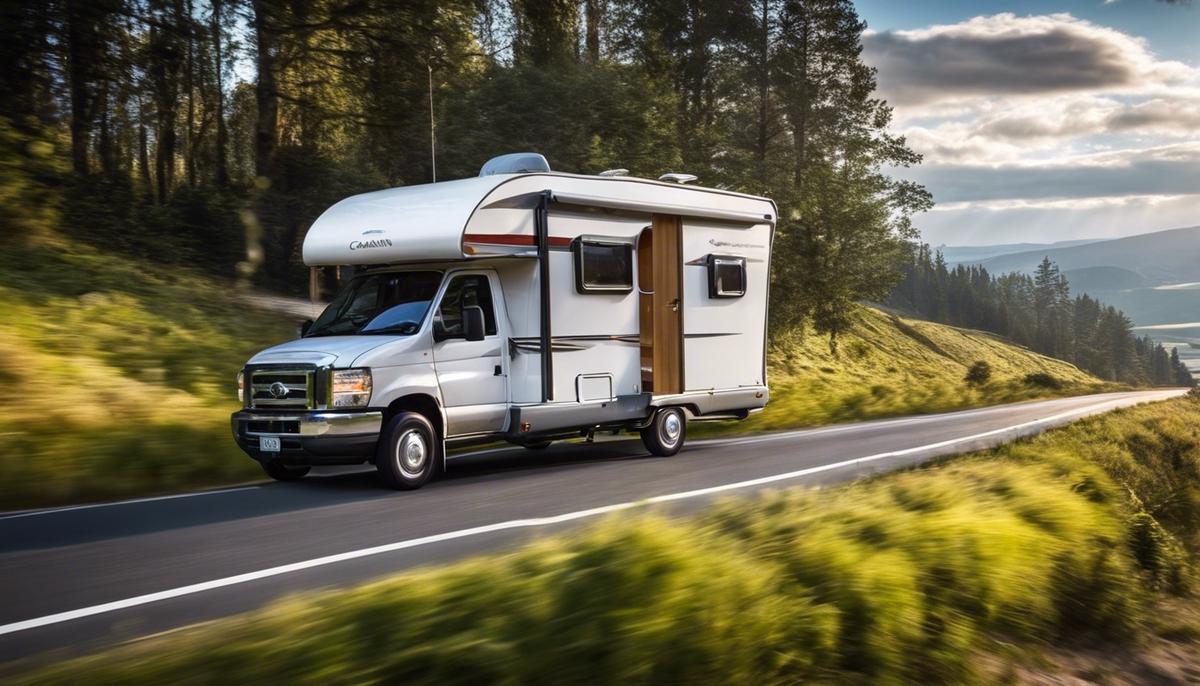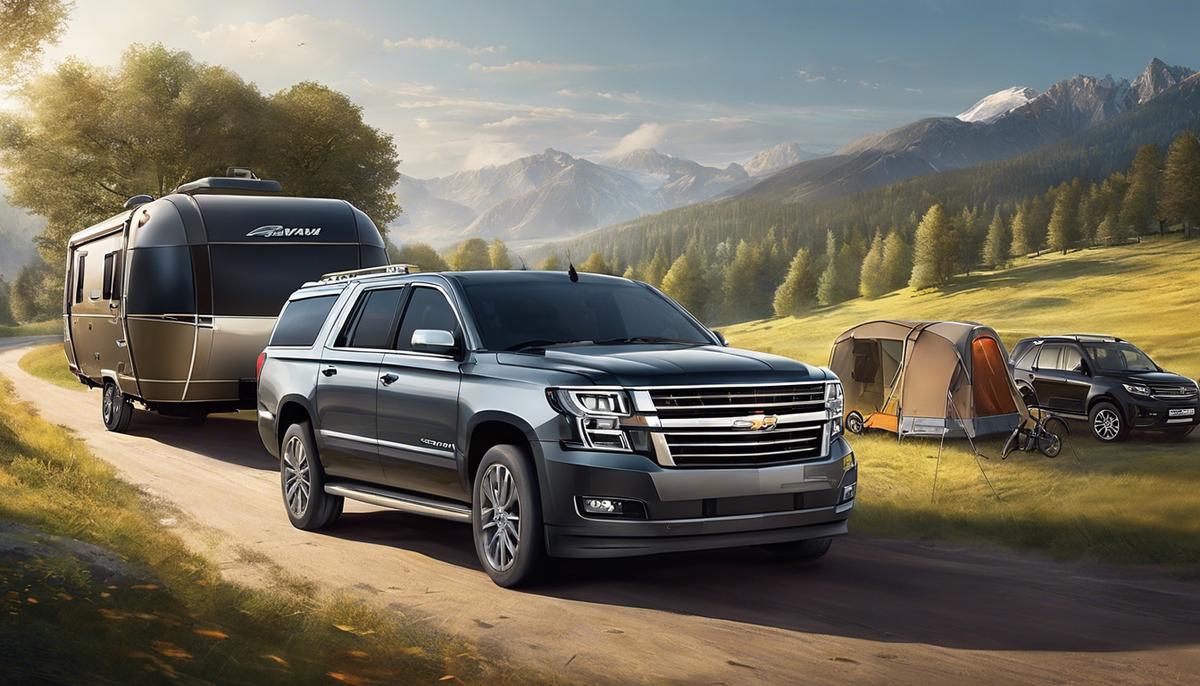Road trips and adventures beckon, and what better way to explore than with your trusty caravan hitched and ready to roll? Whether you’re a seasoned traveler or a newcomer to the caravan community, understanding the essentials of towing and road safety is your ticket to creating memorable journeys. Buckle up and get ready to embark on a thrilling ride into the world of caravans, where the right knowledge will keep you and your loved ones safe while unlocking the full potential of your road trips.
Understanding Towing Capacity
Embarking on a caravan trip? Knowing your vehicle’s towing capacity is crucial for a smooth adventure. Here’s how to find out the pulling power of your chariot to ensure a safe journey.
Step One: Check Your Owner’s Manual
It’s your go-to resource, really. Buried in its pages, you’ll find a gold mine of information about your vehicle’s capabilities. Look for the section on ‘Towing’ to discover your car’s maximum towing capacity.
Step Two: Understand the Terminology
GVWR – Gross Vehicle Weight Rating: This is your ride’s maximum operating weight, passengers and cargo included.
GCWR – Gross Combined Weight Rating: The total allowed weight your vehicle and the caravan can handle, together.
GAWR – Gross Axle Weight Rating: The maximum distributed weight your vehicle’s axle can support.
Step Three: Weigh Your Caravan
Not with your bathroom scales, obviously. Visit a weigh station or use a certified scale to determine the exact weight of your caravan. Make sure it’s packed with all your trip essentials for an accurate figure.
Step Four: Calculate the Tongue Weight
Typically, this should be about 10-15% of your caravan’s total weight. It’s the downforce on the hitch. Too little or too much can sway your caravan, making your journey less of a breeze and more of a storm.
Step Five: Sum Up Your Stuff
Add up the weight of every camping gear, snack stash, and passenger that’ll tag along in your vehicle. This total shouldn’t tip your car’s GVWR or GAWR over the edge.
Step Six: Subtract for Safety
Reserve a safety margin by subtracting around 10-15% from your vehicle’s towing capacity. It gives you some wiggle room for sudden stops or steep inclines.
Step Seven: Double-Checking
Compare your caravan’s weight to your vehicle’s towing capacity. Make sure all weights – your fully-loaded caravan, the tongue weight, and the total weight of your car’s contents – stay within the safe range of your vehicle’s ratings.
Step Eight: Gear Up
Now, outfit your ride! Ensure your towing gear is up to snuff – that means a robust hitch, mirrors for better visibility, and maybe a trailer brake controller for a hefty caravan.
A safe towing journey isn’t a mystery. It’s the result of a little homework, some simple math, and a keen eye for details. Armed with knowledge, your vehicle and caravan are set for a memorable road trip filled with the freedom of the open road. Make sure every journey starts and ends with safety as your co-pilot. Happy and safe travels!

Mastering Hookup and Safety Checks
Step Nine: Secure Your Connection
It’s showtime! Your anticipation builds as you align your tow vehicle with the caravan’s hitch. Glide your caravan toward the hitch, ensuring the ball and coupler meet like long-lost friends. Hear that satisfying click? That’s the sound of the coupler locking securely onto the ball hitch. Insert and lock the hitch pin next, safeguarding against any unwelcome disconnects while you’re cruising down the highway.
Step Ten: Power Up Your Electrics
With the physical connection in place, it’s time to breathe life into your caravan’s electrical soul. Connect the electrical wiring from your caravan to your tow vehicle. This vital step ensures your tail lights, brake lights, and turn signals are in harmony—communicating clearly with your fellow road companions. Give each signal a test. No light mean no go! Ensure a bright and responsive display before you dash.
Step Eleven: Tame Those Chains
Safety chains? Think of them as your caravan’s safety net, always there to catch you if you fall—well, if the hitch fails. Cross the chains beneath the hitch forming an ‘X’, then hook them to your tow vehicle, allowing enough slack for turns, but keeping them off the ground. This crisscross pattern is your backup, should the hitch ever betray you, preventing the caravan from nose-diving into the road.
Step Twelve: Check the Brake Controller
Now, let’s talk stopping power. Your brake controller is the maestro of your caravan’s brakes, and it’s crucial to get this right. Adjust the settings according to your caravan’s weight and your vehicle’s specifications—this is not the time for guesswork. Engage the controller and feel for the brakes. They should respond promptly, not as an afterthought. Too slow can spell trouble, too fast can lead to an unwelcome jolt.
Step Thirteen: Inspect the Tires
Round and round they go, but are they ready to roll? Inspect both your tow vehicle and caravan’s tires for wear and tear. Look for any signs of weakness, and ensure they are puffed up to the recommended pressure. Under-inflated tires are like a tired runner—they won’t make it far. And remember, those radials are the only thing between you and the road, so show them some respect.
Step Fourteen: Adjust Your Mirrors
Take a glance at your mirrors. Can you see the end of your caravan? If not, it’s time to pull those mirrors out or attach extension mirrors. The world behind you matters just as much as the road ahead. Ensure a clear, unobstructed view to avoid any ‘Now you see me, now you don’t’ scenarios with vehicles that may be trailing you.
Step Fifteen: Stow Away
Final touches folks—stow any loose items inside the caravan. The laws of physics are unforgiving; unsecured items can transform into projectiles at the first sign of a sharp turn or sudden stop. Tuck away, strap down, and secure everything – your crockery will thank you.
Step Sixteen: Practice Your Maneuvers
Before you hit the open road, take your rig to an open space and practice. Practice makes perfect, but it also makes for safe turns and stress-free reversing. Get to know the feel of your caravan’s pull and sway—understand how it dances with your tow vehicle. Navigate some cones or markers, and reverse into a parking spot. Confidence on the road is priceless.
As you check off these steps, remember: your journey’s success is measured by the joy of the ride and the safety of your return. Follow these guidelines and you’re not just ready, you’re road-commanding, set to explore the splendors that await beyond your driveway. Adventure calls—answer with your caravan in tow, prepped and primed for memories that are sure to stick longer than the miles under your wheels. Happy trails!

Packing and Weight Distribution
Step Nine: Balance Your Burden
Picture this: a caravan balanced to perfection, ready for the open road. The key is equal weight distribution. Find the center of gravity—typically over the axles—and spread your items evenly from this point. Need a visual guide? Think of creating a sense of harmony, where items interlock like puzzle pieces, maintaining a centered and stable caravan.
Step Ten: Heavy on Bottom, Light on Top
Now imagine stacking your belongings. Heavier items beg for a low-lying home, nestled securely on or near the floor. Chairs, tables, and hefty camping gear form a solid base. Lightweights play their part, too—they take the high road, filling overhead compartments. The goal is equilibrium, and a low center of gravity, just like a skilled tightrope walker seeking balance.
Step Eleven: Secure and Stow
Once your caravan’s belly is filled with weighty treasures, it’s vital to hustle and secure. Straps and nets aren’t just accessories; they’re non-negotiables for a safe journey. They clutch your cargo, preventing a domino effect of toppling gear under motion. Even soft items like bedding and clothes should be stashed and immobilized. Consider this the safety dance of your caravan—an ensemble of restraint.
Step Twelve: Accessibility is Key
Plot your pack with a mapmaker’s precision. Situate items you’ll reach for frequently within hand’s grasp. Snacks, drinks, maps, and emergency kits, all stowed for convenient retrieval, even by the kids. Ensuring these essentials are accessible means smoother sailing during travel, free from the need to excavate mid-trip.
Step Thirteen: A Fluid Foundation
Liquids can be a sneaky source of instability. Water, oils, and other fluids should claim a low and central residency, their weight equally shared. Imagine them as the anchor of your caravan—fluid, but foundational. When nestled in tight, they sway less and keep their composure, even as roads bend and dip.
Step Fourteen: Last Looks and Lock-Up
Final sweeps are the cherry on your packing sundae. Run through, inside and out, scanning for anything amiss. Doors latched? Windows secure? Items tethered? Picture your caravan like a ship setting sail; everything locked, tight, and ready for the voyage. It’s not overindulgence—it’s due diligence, the linchpin of a successful tour.
Step Fifteen: The Litmus Test
Before you take the helm, there’s one last trial. A test tow within a safe area will reveal any adjustments needed. It’s your caravan’s dress rehearsal, its chance to strut before the main performance. Listen, feel—does the caravan follow happily or protest with sways and jolts? Iron out these kinks now, and when the time comes, you’ll drive with a grin, confident in your caravan’s impeccable balance and harmony.
Ready to roll? With these steps, your caravan transforms from a mere vehicle into a trusty steed, geared for adventure and memories just waiting to unfold on the open road.

And just like that, you’re now equipped with the know-how to make every caravan journey a smashing success. Think of these tips as your co-pilot, guiding you through the twists and turns of travel with ease. Ready your caravan, pack up with confidence, and hit the open road with a spirit of adventure. The horizon is wide open, your caravan is prepped, and the stories waiting to be told are as limitless as the miles you’ll cover. Safe travels, friend!
Experience the power of Writio, the ultimate AI content writer! This article was crafted by Writio, the wordsmith extraordinaire.
Leave a Reply